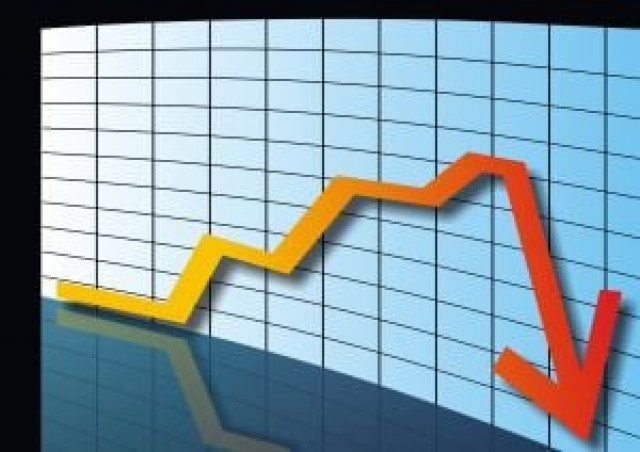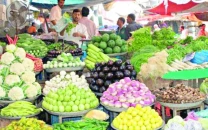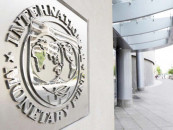Quarterly report: SBP terms 3.7% growth rate a notable feat
Wheat production estimated to decline amid lower yield.

The State Bank of Pakistan (SBP) has termed the economic growth of 3.7% ‘notable’, a figure that is below the government’s target of 4.2%.
The State Bank of Pakistan’s Third Quarterly Report released on Friday cites damage to cotton crop due to floods, ongoing energy shortage, rise in international oil prices and security concerns as the stumbling blocks.
It also hinted as wheat to be another stumbling block in the coming future. The commodity’s production, currently in process, is expected to drop amid lower yield and water shortage.
The growth rate of 3.7% posted during July 2011 to March 2012 is better than the growth of 3% last year and also comes in the wide range of 3% to 4% projected by the central bank.
This growth was supported by a better harvest, pick up in construction and increase in value addition from the finance and insurance sub-sector, adds the report.
The report also mentions that there has been a shift in the largest contributor during the financial year with commodity producing sectors taking over domestic growth such as car sales.
Agriculture sector
The agriculture sector performed better this year with livestock remaining the highest contributor in agriculture GDP.
Major crops, mainly the kharif crops – rice, cotton, sugarcane and maize – also contributed to agricultural growth.
The report gave a heads up to the disappointing wheat outlook, a commodity that contributes 13% of the total value addition by the agricultural sector and is cultivated over 37% of the total crop area.
Preliminary estimates suggest total production of 23.5 million tons, compared with 25.2 million tons realised in the previous year. Not only was the area under wheat cultivation lower this year, but crop yields also declined because of lower fertilizer use and water shortages.
Hence, even the incentive of higher wheat support prices fell short in enhancing production towards achieving the target of 25 million tons.
Industrial sector
Industrial sector surpassed its growth target of 3.1% for financial year 2012, mainly due to higher-than-targeted growth in mining and construction industries.
With the end of winter, construction activity – one of the largest contributor to the growth – gained further momentum particularly in March. As a result, cement sales reached a record high of 2.6 million tons in March 2012, showing a yearly growth of 10.6% over March last year. Moreover, some building material producers, whose production had been declining until the last quarter, posted positive growth in the third quarter.
According to preliminary estimates for fiscal 2012, the construction industry reported 6.5% growth compared to a 7.1% decline in FY11. This growth was well above the target of 2.5%.
Higher inflows of project aid and larger fund releases under the public sector development programme, suggest greater activity in public sector projects
The food, beverages and tobacco industry has performed well on the back of a better harvest, strong domestic demand, and greater exports to Afghanistan.
Over the past year, five new beverage plants have opened in Khyber-Pukhtunkhwa. The government also reduced excise duties on beverages in financial year 2012 budget. Similarly, oil and ghee exports to Afghanistan have also been higher.
In the pharmaceutical industry, the government reduced the custom duty on raw material imports – in most cases from 10% to 5% - which made exports more competitive. In the domestic market, an upward revision of some medicine prices also led to improved margins.
Smuggling of Korean and Indian televisions
It is widely held that the import of consumer durables is impeding the domestic industry. In the case of home electronics, smuggling of Korean and Indian TV sets – via Dubai and Afghan Transit Trade route – and under-valuation and under-invoicing of Malaysian and Chinese air conditioners have put the local industry under stress.
In the lower-end of the market, the demand for fans has fallen substantially because of extreme load-shedding in Punjab.
The State Bank observed that although the economy has shown some recovery in terms of GDP growth, the key macro indicators still remain weak.
Published In The Express Tribune, June 23rd, 2012.



















COMMENTS
Comments are moderated and generally will be posted if they are on-topic and not abusive.
For more information, please see our Comments FAQ